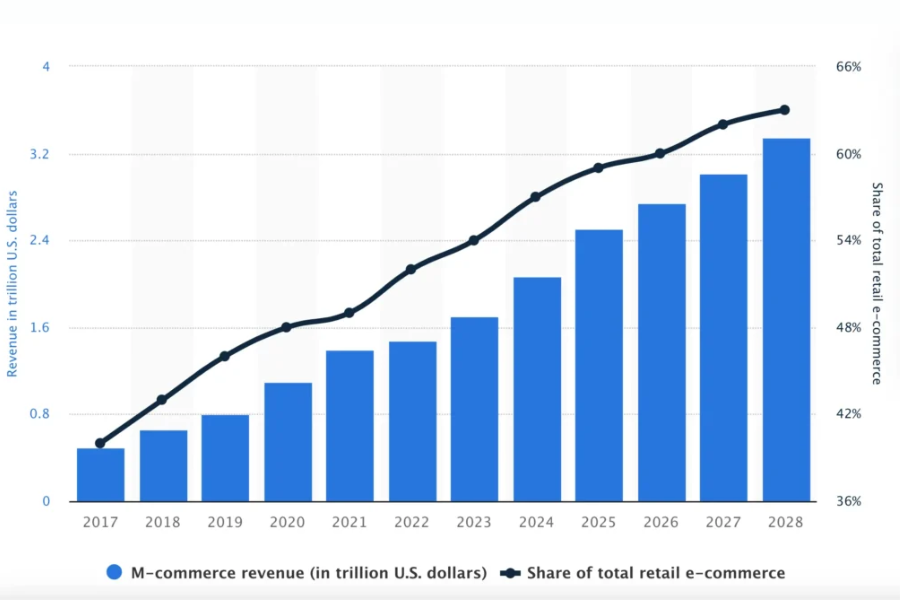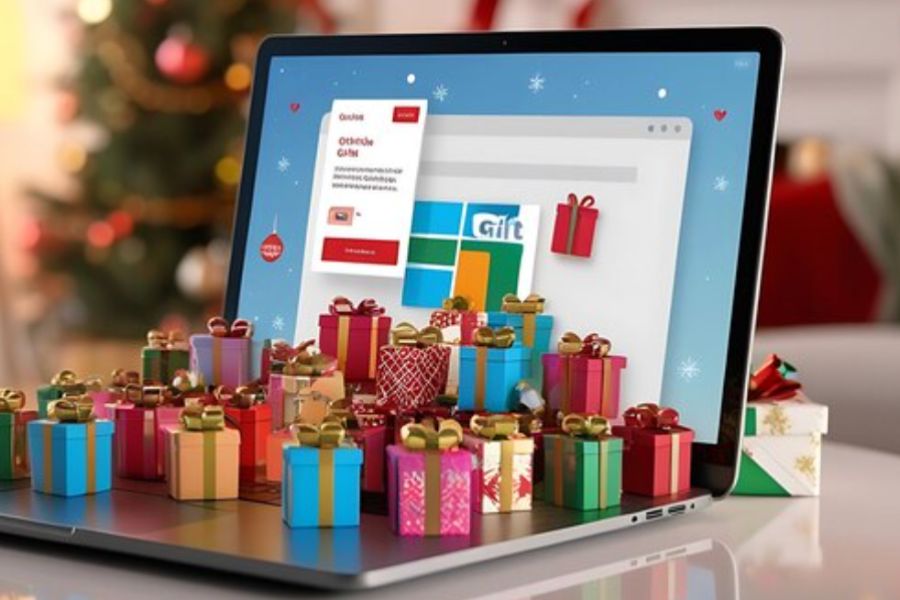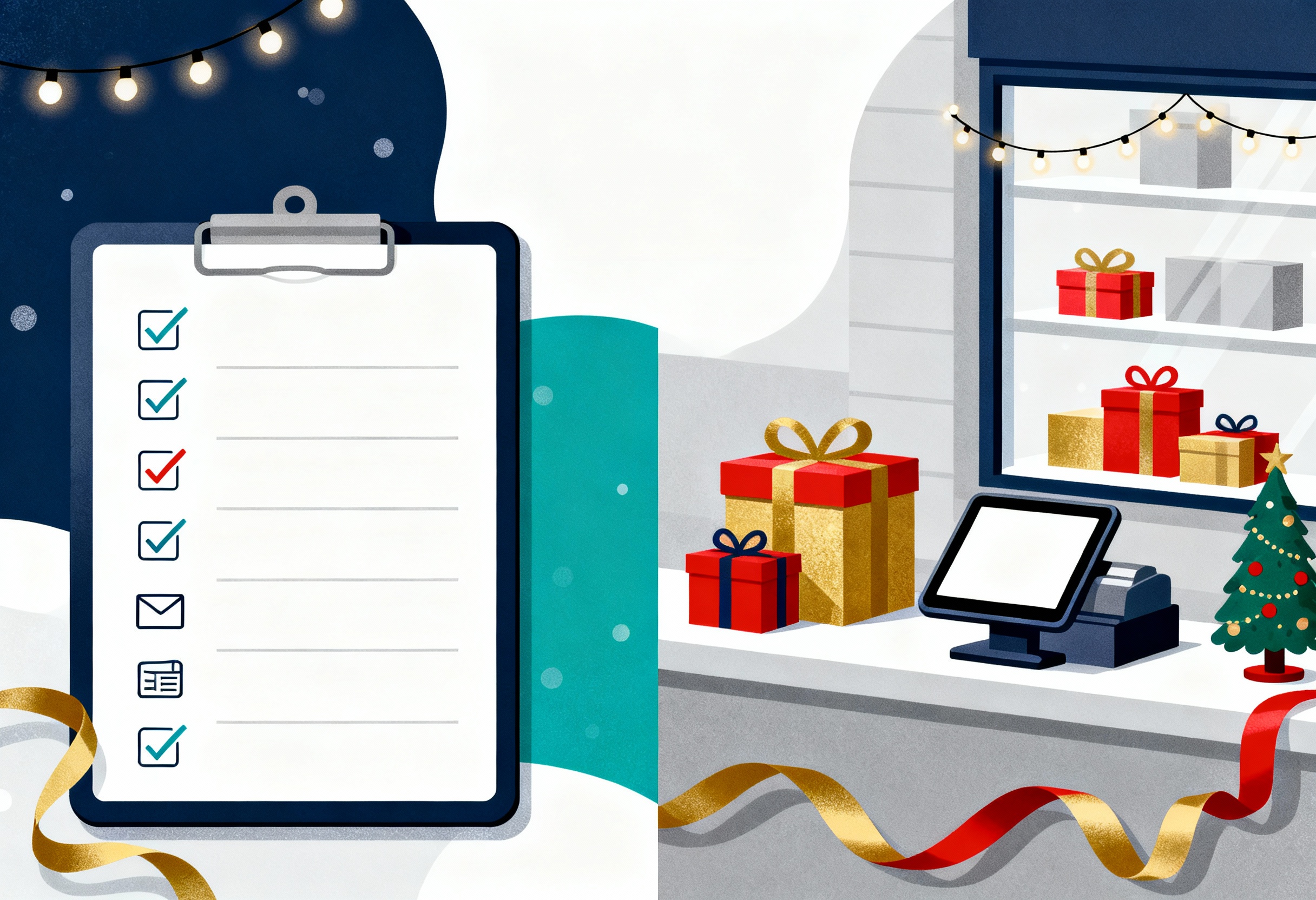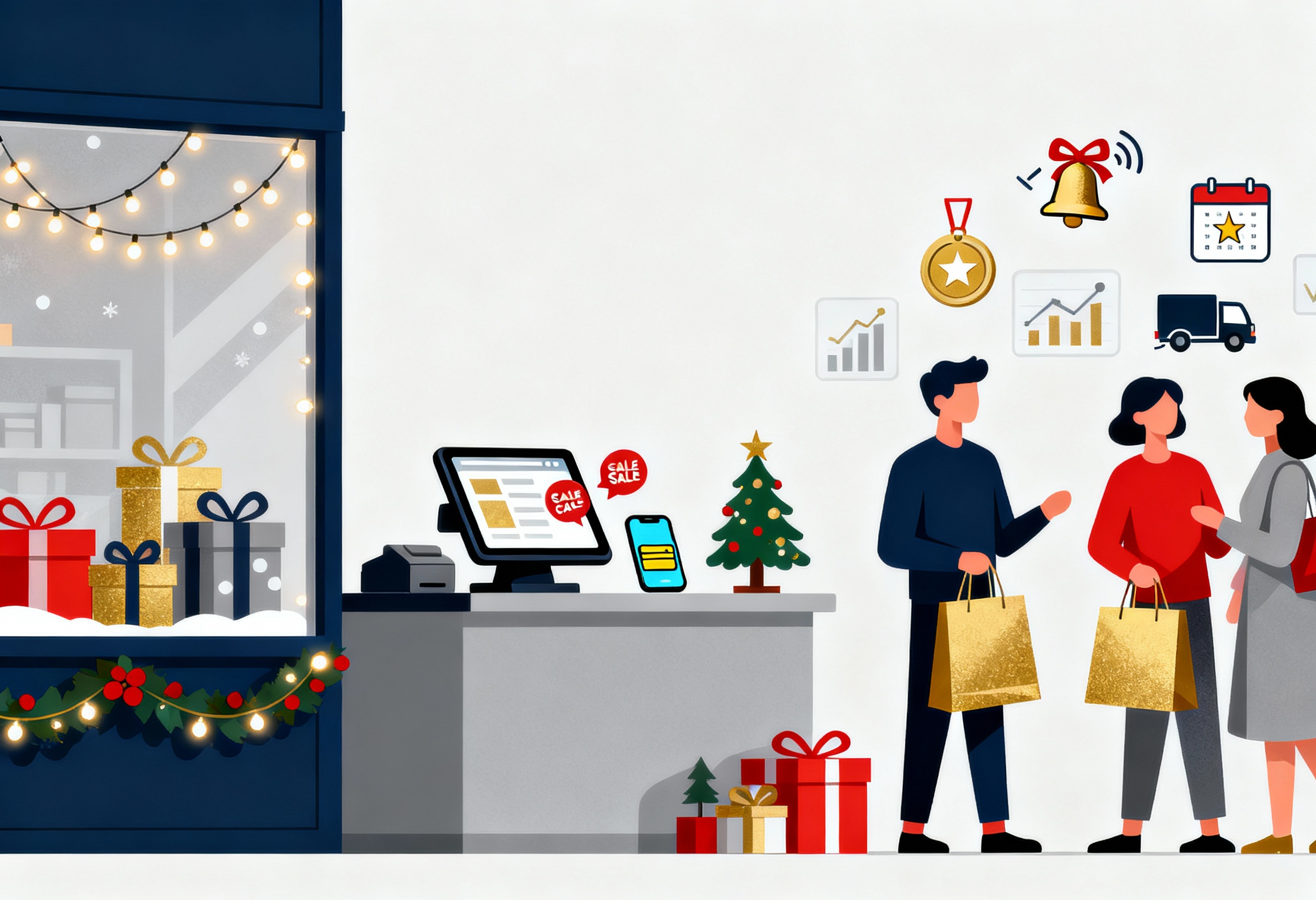The holiday season is certainly the most important time for retailers. It drives short-term revenue, shapes how customers experience a brand, influences year-end performance, and reveals how prepared a business is to adapt under pressure. Brands that treat the season as a strategic opportunity, not just a promotional window, tend to build stronger connections and more durable results. The focus should not be on doing more across every channel, but on doing the right things with intent.
This article, developed with insight from the Connect strategy team, outlines 12 holiday marketing approaches designed for 2025. Each recommendation reflects real buyer behavior and practical use cases to help businesses remain visible, adaptable, and customer-focused throughout the season.
Highlights:
- Holidays are a time when spending spikes, with people willing to purchase more and a greater opportunity for unique offerings.
- From user-generated content to mobile-first design and influencer collaboration, each holiday marketing strategy supports both short-term revenue goals and longer-term brand equity.
How Holiday Marketing Decides A Business’s Seasonal Sales
When planned with precision and aligned with business goals, holiday marketing drives short-term results while laying the groundwork for longer-term brand equity. It speaks to how and when customers spend, and more importantly, what motivates them during specific moments of the year.
Here, we’ve listed five reasons holiday marketing remains a smart investment for businesses aiming to scale reach, strengthen customer relationships, and grow revenue.
- Consumer Spending Spikes Create Built-In Demand: The seasonal calendar brings recurring surges in buying behavior. Customers expect to shop more, spend more, and give more during holidays. This shift affects retail, travel, food service, entertainment, and beyond. Campaigns timed to this behavior place brands directly where wallets open most naturally.
- Emotional Context Shapes Buying Decisions: Holidays are emotional environments. People aren’t just buying products – they’re buying experiences, nostalgia, and connections. Brands that reflect the right tone and sentiment during key periods make a stronger impression. Campaigns that mirror what people feel tend to outperform those that simply promote.
- Creativity Gets More Attention During Seasonal Peaks: Holidays give brands permission to act differently. Themed experiences, unexpected visuals, limited-time packaging, or playful campaigns all cut through the noise that typical brand messaging can’t. Buyers welcome variety and creativity during this time, creating space for new ideas to stand out.
- Channel Activity Increases Organically: People post, search, share, and browse more during holidays. Whether it’s searching for gifts, sharing traditions, or organizing gatherings, engagement across platforms rises. Brands that build campaigns with high sharing potential can ride this increased activity to new reach and discoverability.
- Well-Timed Promotions Drive Measurable Revenue: Holiday campaigns aren’t only about awareness,they produce results. Strategic discounts, bundled pricing, loyalty incentives, and exclusive product drops give customers a reason to act now. When the messaging meets the moment, sales follow, often at scale.
12 Holiday Marketing Strategies for 2025
Holiday periods present a strong window for businesses to elevate their marketing and tap into higher spending behavior. To support revenue goals during the festive season, here are 12 practical holiday marketing strategies designed to drive stronger sales outcomes in 2025.
Tiered Discount Structures
Shoppers today weigh pricing options before committing. Flat discounts might grab attention, but they often fail to drive larger cart values. A tiered structure shifts the narrative by rewarding higher spending with progressively better deals. This approach speaks directly to value-focused buyers who are willing to spend more when incentives match their expectations. Setting thresholds like “Spend $100, get 10% off; Spend $200, get 20% off” triggers a psychological ladder effect, each rung gives a sense of achievement.
For brands, this holiday marketing strategy drives revenue per transaction without eroding profit margins too early. Instead of blanket markdowns, pricing becomes a lever for guiding purchasing behavior.
This setup also builds room for better stock management since volume is more predictable at each tier. Tracking customer reactions to these thresholds offers insights into buyer segmentation, helping marketing teams refine promotional targets for post-holiday cycles.
Gift-Guided Solutions
Gift-giving isn’t always intuitive. Many buyers arrive with uncertainty, especially when purchasing for others outside their immediate circles. Brands that match products to recipient profiles stand out. Curated gift guides organized by personality type, interest, or occasion can make a difference. The key lies in storytelling. Instead of listing products, speak to use cases and emotional outcomes, so the buyer can imagine the recipient’s joy.
For B2B sellers working with merchants, supporting them with ready-to-deploy content for gift scenarios strengthens partnership value. Templates for social campaigns, landing pages, and email flows built around these guided experiences give retailers a faster path to campaign deployment. The gift-giving journey becomes more guided and intentional when retailers frame their catalog around emotions, not just SKUs.
►►► Optimal solution set for businesses: Multi store POS, Next-gen POS, Inventory Management Software (MSI), Self Service, Automation, Backorders
Loyal Customer Focus
Returning customers tend to convert at a higher rate and often account for a substantial portion of holiday revenue. Yet loyalty is often an afterthought during peak season. When buyers feel remembered, they act differently. Early access, private flash sales, and personalized bundles elevate the experience for those who already know the brand. These touches signal appreciation, not just automation.
From a strategy standpoint, segmenting lists by past purchase behavior and assigning unique journeys can create higher ROI than broader campaigns. Loyalty isn’t just about points or perks, it’s about context and timing.
Brands that tie past preferences into holiday marketing messaging increase the chances of deeper basket values and post-holiday retention. For B2B brands, equipping retailers with data to activate these journeys adds measurable impact.
Mobile-First Experience
Statista projects that mobile commerce revenue will approach 2.5 trillion U.S. dollars by 2025 and is expected to account for 63% of total retail ecommerce within the following four years. This shift underscores how central mobile has become in how consumers interact with brands and make purchasing decisions.

Shoppers tap, swipe, and browse in short bursts throughout their day. A mobile-focused experience goes beyond responsive design. It considers how quickly content loads, whether buttons are sized for thumbs, and how few steps it takes to check out. If friction exists, buyers drift. On mobile, convenience carries more weight than aesthetic polish.
Retailers need mobile paths that fit seasonal urgency. That means payment options native to mobile, autofill support, and skip-login guest flows. Product discovery should favor scrolling over clicking, while holiday marketing messages should appear naturally within browsing patterns. B2B teams supporting retail clients should test mobile-specific flows before pushing live, using real user behavior to guide iteration.
Free Shipping Thresholds
Shipping costs remain one of the biggest factors behind cart abandonment. Offering free shipping without a requirement erodes margin. A better tactic is setting a minimum spend, high enough to preserve profitability but within reach to nudge larger orders. That number should be anchored to historical order values and inventory goals.
Holiday marketing campaigns that communicate the threshold clearly and early tend to perform better. Placing reminders on product pages, carts, and promotional emails allows shoppers to self-adjust their spending. When combined with limited-time urgency, the threshold becomes a trigger, not just a bonus. For B2B sellers, helping retail partners calculate and apply the right threshold builds smarter promotion strategies across different customer segments.
Influencer Collaborations
Brands aiming for impact during the holidays often turn to creators who have already cultivated loyal audiences. Rather than relying solely on traditional advertising, businesses are finding greater success by working through influencers who align closely with their customers’ interests.
These partnerships are most effective when the focus is on authenticity and long-term resonance. Micro and mid-tier creators, in particular, tend to build stronger engagement, creating an environment where brand messages feel personal rather than promotional.
Success hinges on timing, trust, and creative freedom. Brands that treat influencers as collaborators, not media outlets, often see content that resonates more deeply. Holiday messaging performs best when wrapped in personal stories or product rituals that mirror real-life moments.
This kind of storytelling stays relevant beyond the peak season. The best results come when businesses support the influencer’s voice instead of scripting it, allowing the message to land more naturally with its intended audience.
User-Generated Content Campaigns
The holiday season encourages people to share moments, and brands that invite this behavior can turn everyday shoppers into holiday marketing campaign contributors. When customers are given the right framework and motivation, they respond with enthusiasm.
Highlighting customer stories, creating branded templates for sharing, or featuring user content on official channels can all spark participation. The motivation comes from being seen, not from receiving a discount. That kind of engagement builds stronger emotional ties to the brand.
When it comes to making purchases, almost a quarter of global shoppers named Facebook their favorite social commerce platform in 2024, with Instagram following at 20 percent. Content generated by real users on these platforms influence decisions in the moment, and then becomes a valuable resource.
It feeds into ad creative, informs email campaigns, and shapes landing page storytelling. The key isn’t in requesting content directly, but in creating an environment where people genuinely want to participate.
Virtual Holiday Events
Holiday retail has taken a digital turn, and many businesses are investing in virtual events that build a sense of real-time connection. These experiences can take many forms, from livestream product showcases to interactive workshops. What makes them successful is not scale, but how personal they feel. People are looking for more than just convenience. They remember interactions that feel thoughtful, intentional, and unique to the brand.
Execution matters more than novelty. A virtual event should feel like it was designed for a specific group, not a generic audience. A home goods brand might host a styling session. A B2B company could run a live product demo tailored to procurement teams. Rather than aiming for broad appeal, strong holiday marketing campaigns focus tightly and deliver something that meets a clear need. When done right, the experience builds affinity that outlasts the holiday window.
Cause-Driven Giving
Holiday shopping decisions are increasingly influenced by values. Customers want to know what a business stands for, and they remember which ones show up with more than just sales messaging.
Aligning purchases with social or environmental causes can shape not just how a campaign is received, but how a brand is remembered. This shift reflects a deeper change in consumer priorities, especially among younger buyers who view spending as an extension of their beliefs.
Intent must match execution. Short-term pledges or vague statements often come across as hollow. The most effective cause-related campaigns show commitment through long-term partnerships, transparent outcomes, and clear communication. Whether it involves contributing a portion of each sale or working directly with a nonprofit, the impact should be traceable. When brands take action that customers can see and verify, the relationship grows stronger and more durable.
Extended Holiday Promotions
Shoppers no longer respond only to one weekend of deals. Businesses are stretching holiday promotions across a longer timeline to meet changing buying habits. Early planners, comparison shoppers, and last-minute gifters each move on different cycles. Extending the promotional calendar allows a business to speak to each group at the right moment, without overwhelming systems or audiences with one concentrated push.
Campaign rhythm becomes the deciding factor. Early phases might focus on bundles or loyalty offers, while later stages could introduce limited-time discounts or curated collections. Post-holiday incentives also give brands a chance to re-engage buyers while inventory is still fresh. The goal is not to maintain urgency throughout, but to guide the customer journey thoughtfully and build a campaign that unfolds with purpose.
Cross-Screen Advertising
Customer attention is scattered across devices, and holiday marketing campaigns that remain confined to one screen often lose momentum. Brands are adapting by building campaigns that follow their audience across phones, tablets, TVs, and desktops. Each device brings its own habits.
A mobile user may glance at a product during a commute, then revisit it later on a laptop. When messages shift tone and timing to suit each context, they tend to stay in the customer’s mind longer.
Planning for this kind of visibility involves more than duplicating ads across platforms. Content must reflect the way people interact in each space. A short-form video might introduce a product during a streaming session. A static ad could retarget on social the next day. Email might close the loop with a reminder or limited-time offer. These touchpoints need to feel like parts of a whole, not separate plays. The more connected the experience, the more likely it is to convert.
Omnichannel Chatbots (e.g., WhatsApp)
Holiday shoppers ask more questions, expect quick replies, and often switch between apps while deciding. Businesses that rely on a single point of contact often fall behind. Instead, many are moving toward chatbots that can maintain context across channels. Whether a conversation begins on WhatsApp, continues on Facebook Messenger, or ends on a website, the buyer expects continuity. When that happens, frustration goes down and conversions go up.
Building this kind of system requires smart integration, but the payoff is measurable. Customers get answers where they already spend their time. Sales teams spend less time repeating themselves.
A reliable chatbot acts as a first layer, filtering questions, guiding decisions, and handing off when needed, instead of replacing humans. This keeps the experience smooth while maintaining the speed people expect during the holiday rush, which is a valuable asset for any holiday marketing strategy.
Utlizing ConnectPOS for Holiday Campaigns
Holiday sales often test a retailer’s ability to balance speed, service, and stock accuracy, especially across physical stores and online channels. ConnectPOS serves as a real-time transaction platform designed to give businesses tighter control during high-volume retail periods. The platform gives store teams the tools to maintain consistency, meet shopper expectations, and respond quickly to seasonal shifts in demand.
Retailers using ConnectPOS during the holiday period can act faster without losing track of inventory, customer data, or campaign performance. The system brings together point-of-sale, ecommerce, loyalty, and fulfillment in one ecosystem making it easier to adjust campaigns without disrupting operations. This kind of operational cohesion becomes the foundation for stronger holiday marketing campaigns.
- Unified Inventory Across Online and Offline Channels: Shoppers don’t care where the stock lives. They want to know if it’s available. ConnectPOS syncs product data across stores and ecommerce, so availability remains accurate even during peak foot traffic or flash sales.
- Real-Time Reporting for Campaign Adjustments: Seasonal campaigns evolve fast. Teams need data analysis to inform what gets pushed, paused, or bundled. ConnectPOS provides up-to-the-minute transaction reports, letting businesses adapt based on what’s actually selling.
- Click-and-Collect Built Into the Checkout Flow: In-store pickup plays a big role in holiday convenience. ConnectPOS integrates this option directly into the sales process, giving shoppers more flexibility and helping stores drive traffic back to physical locations.
- Mobile POS for Pop-Ups and Events: Temporary setups like markets and holiday fairs require a portable setup without losing access to central inventory and customer history. ConnectPOS supports mobile selling while keeping everything synced to the core platform.
- Personalized Experiences for Returning Shoppers: Holiday buyers are often repeat customers. ConnectPOS gives store associates access to purchase history, loyalty programs and points, and preferences, allowing more tailored recommendations and bundled incentives at checkout.
FAQs: Holiday Marketing
Why should businesses prepare their holiday marketing strategy early?
Consumer behavior starts shifting weeks before key holidays. Planning early gives businesses time to test campaigns, align inventory, and schedule content across channels, avoiding last-minute pressure.
What kind of promotions tend to perform best during the holidays?
Time-sensitive offers, bundle deals, loyalty rewards, and exclusive product drops often drive stronger response rates. The key is matching each offer to the specific audience segment and purchase behavior.
How can small businesses compete with larger brands during the holiday season?
Smaller teams can move faster and personalize more deeply. Local messaging, curated gift guides, or niche content can stand out when large brands are pushing mass-market campaigns.
Conclusion
Holiday marketing campaigns work best when they reflect clear thinking and well-timed execution. Shoppers respond to brands that anticipate needs, offer practical value, and create experiences worth remembering. The goal is not to chase short-term spikes, but to turn seasonal interest into sustained engagement.
The landscape in 2025 will reward businesses that act with precision and stay focused on what matters most to their audience. These twelve strategies are not just ideas to test, but tools to build consistency across channels and create a customer journey that holds attention when it matters most. For retail teams looking to strengthen performance during high-traffic periods, ConnectPOS supports real-time inventory sync, unified checkout, and customer data visibility across every sales channel. Contact us now!
►►► Optimal solution set for businesses: Shopify POS, Magento POS, BigCommerce POS, WooCommerce POS, NetSuite POS, E-Commerce POS



